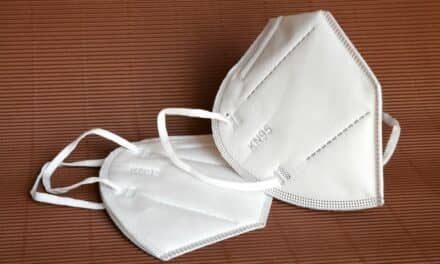One company’s approach to keeping imaging service engineers safe
By Matthew VanDerVort
As a global radiation safety officer (RSO) for an oncology company, I monitor several hundred employees who work with ionizing radiation every day. Since we are licensed by the U.S. Nuclear Regulatory Commission (NRC) to use radioactive materials, it’s critical for a full-time RSO to ensure that we safeguard the health of our employees and keep them safe. Personally, I am responsible for maintaining compliance with regulations and identifying any radiation safety problems.
The NRC stipulates that employees should not be exposed to more than 1,250 mrem of ionizing radiation dose per quarter—and I am tasked with enforcing that policy. Monitoring dosimetry badges, the devices our employees wear to track their radiation exposure, allows me to make sure everyone adheres to current policies.
Moreover, traditional badges use film to record radiation dose. And every three months, old badges have to be collected and sent to be analyzed at a processing center. In the meantime, new badges need to be sent to employees. Suffice it to say that the whole process is very cumbersome. After all, constantly rotating badges is particularly time-consuming—especially since field service engineers are located all over the world.
What I needed was a more efficient and timely means to collect this data. A few years ago, I discovered a new kind of wireless, on-demand dosimetry badge that eliminates the need to collect old badges and send new badges to engineers every three months. One badge is assigned to each engineer and the results from that badge can be read remotely. Further, information is captured from the badge and can be viewed on demand by downloading the data onto a computer or mobile device.
For us, it’s been a game-changer. Specifically, the convenience of not having to collect badges and mail them back and forth to field engineers around the world has created a more efficient system for monitoring radiation exposure.
Accidental Exposures
The ability to get a reading on demand at any time has allowed us to troubleshoot perceived issues, soon after they occur. In theory, if our employees are wearing their dosimeters properly, the devices should be recording 0 mrem of ionizing radiation dose because they should be an acceptable distance away from the machines when they’re in use.
Occasionally, however, we do experience “accidental exposures.” For example, we may get a high reading if an engineer leaves his or her dosimeter in their briefcase in the room near a machine. And if the dosimeter is packed in checked baggage during travel, it’s possible the checked baggage could be scanned by a CT machine, which could translate to an inordinately high dose of ionizing radiation, and thereby throw off reporting results.
Using our old badge dosimeters, we wouldn’t find out about the high reading until the engineer turned in the badge during a regular three-month interval. If the accidental exposure had occurred in the first week the employee was wearing the badge, he or she might not remember what happened that particular day to cause the high reading. In that case, we would not be able to resolve the issue.
In my job, however, I need to be able to explain and document to state and federal regulators what caused high readings; otherwise, it’s possible that my company could be subjected to a time-consuming audit.
Instant Explanation
The ability to monitor occupational doses at any time enables us to easily pinpoint exactly why an accidental exposure took place. Since we began using this wireless, on-demand dosimetry technology, our records more accurately portray the exact amount of dose to which our employees are exposed—allowing us to determine where those exposures took place. Only then can we work with our field service engineers to make changes to prevent repeat occurrences.
That’s so much better than receiving data points four times a year that tell us something went wrong—but we aren’t quite sure what it was or how to fix it.
Smart Solutions
From a financial standpoint, switching to wireless, on-demand monitoring badges (We use Instadose+ dosimeters.) has also been feasible. In fact, the cost of transitioning to this technology is very comparable to the price of collecting and replacing old film dosimeters. The biggest difference? We save a significant amount of time by not having to collect and process badges to maintain compliance. Safeguarding the health of our global staff has become much simpler with this approach.
Matthew VanDerVort is a global radiation safety officer at Accuray. Questions and comments can be directed to chief editor Keri Forsythe-Stephens at [email protected].





